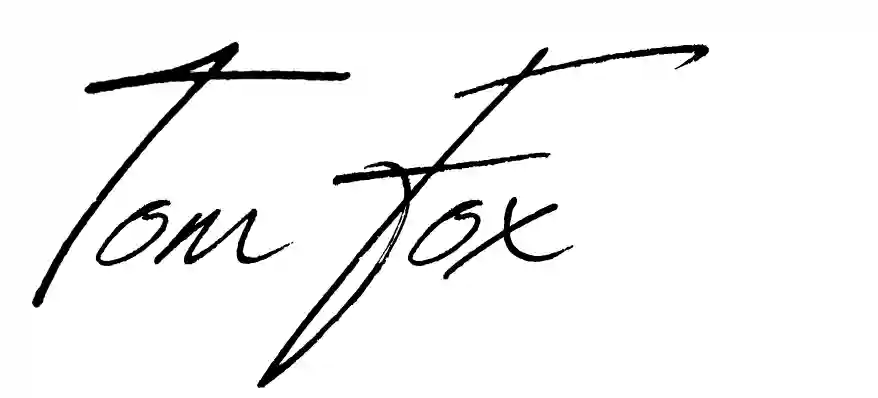Beyond the “Yes-Trace”: Why “No” Is the New “Yes”
Why the “Yes-Trace” Is Dead, and How to Build Trust by Embracing Negation
Alright, you rebellious rule-breakers, let’s talk about a sales technique that’s been peddled for decades: the “yes-trace.”
Now, before you start picturing me leading a conga line of “yes men” (though, hey, a little enthusiasm never hurts), let me clarify – this isn’t about brainwashing your prospects or manipulating them into mindless agreement.
It’s about understanding the psychology of persuasion and using a counterintuitive approach to build trust, reduce resistance, and close more deals.
Done with the endless sales theory and ready to actually close more deals? If you want to skip the ‘WHY’ and get straight to the ‘HOW’?
Make “Coffee with a Closer” your next move. Get weekly, battle-tested action steps delivered directly to your inbox – no fluff, just results.
The “Yes-Trace”: A Tired Old Tactic (That Doesn’t Work)
The “yes-trace” is a classic sales technique that involves asking a series of leading questions designed to elicit “yes” responses from your prospect.
The idea is that by getting them to say “yes” repeatedly, you’ll build momentum and make them more likely to say “yes” to your final offer.
But here’s the problem: it’s transparent, it’s manipulative, and it often backfires spectacularly.
Why the “Yes-Trace” Backfires: The Psychology of Resistance
When someone bombards you with a series of leading questions, you can practically smell the hidden agenda a mile away.
It triggers our natural defenses against manipulation.
It’s like being interrogated by a used car salesman – you know they’re trying to trap you, and it makes you want to run in the opposite direction.
Here’s why the “yes-trace” often fails:
- Loss of Autonomy: The “yes-trace” takes away the prospect’s sense of control. People have a strong need for autonomy, and when they feel like they’re being led down a predetermined path, they resist.
- Increased Skepticism: It raises red flags. Prospects become suspicious of your motives and question the validity of your claims. It can erode trust quickly.
- Superficial Agreement: Those “yes” responses you’re getting aren’t genuine; they’re often just a polite or passive way to get the salesperson off their back. They lack commitment.
- Backlash Effect: When it comes time to make the real decision, that built-up resistance, fueled by the feeling of being manipulated, will likely result in a big, fat “no.”
The Power of “No” (It’s Not Just for Toddlers): The Psychology of Agreement
Instead of trying to force a “yes,” start with a “no.”
That’s right, embrace the power of negation.
Ask questions that are designed to elicit a “no” response.
This might seem counterintuitive, but it actually works wonders for a few key psychological reasons:
- Autonomy and Control: “No” questions give the prospect a sense of control and autonomy. They feel empowered to disagree, which reduces their resistance and creates a more comfortable environment.
- Trust and Authenticity: By giving your prospect the freedom to disagree, you show that you respect their opinion, that you’re not trying to manipulate them, and that you value their honest feedback. This builds trust and credibility.
- Reduced Cognitive Load: “No” questions are often easier to answer. “Yes” questions can sometimes require more mental processing as people consider the implications of their agreement. “No” questions can simplify the interaction.
- Safety and Openness: People are naturally resistant to being told what to do. By starting with a “no” question, you lower their defenses and make them more receptive to your message. When they feel comfortable saying “no,” they’re more likely to open up and share their true thoughts and feelings, revealing valuable insights.
“The ‘no’ is your secret weapon for persuasion. Reduce resistance, create safety, and unlock the truth behind their objections.”
Tom Fox
Examples of “No” Questions:
Here are some expanded examples, categorized for clarity:
Challenging Assumptions:
- “Have you given up on finding a solution to [their problem]?”
- “Is it a ridiculous idea to explore how we can improve your current situation?”
- “Would it be a complete waste of time to discuss potential cost savings?”
Reducing Pressure:
- “Are you completely satisfied with your current provider?”
- “Is there no room for improvement in your current process?”
- “Is staying with the status quo your only option?”
Seeking Honest Feedback:
- “Would you say our proposal is completely off the mark?”
- “Is it impossible for us to meet your budget requirements?”
- “Are you absolutely certain our solution isn’t a good fit?”
Exploring Alternatives:
- “Can you be completely sure that your current strategy is the best option available?”
- “Is there no chance that a different approach could be more effective?”
- “Are you ruling out any potential benefits of making a change?”
Turning the Tables: From “Yes-Man” to “No-Nonsense”
By starting with “no” questions, you can turn the tables on the traditional “yes-trace” technique and create a more authentic, respectful, and persuasive sales experience.
This “No-Nonsense” approach is all about honesty, transparency, and giving your prospects the freedom to make their own decisions.
It’s about building trust, reducing resistance, creating a safe space for open and honest communication, and ultimately, uncovering the truth behind their objections.
The “No-Nonsense” Approach: Honesty and Empowerment
This approach goes beyond just using “no” questions. It’s a philosophy that permeates your entire sales interaction:
- Honesty and Transparency: Be upfront about your intentions and avoid manipulative tactics.
- Respect for Autonomy: Empower the prospect to make their own decisions. Don’t try to force them into anything.
- Active Listening: Focus on understanding their needs and concerns.
- Value-Driven Communication: Emphasize the value you provide and how it addresses their specific challenges.
- Problem-Solving Focus: Position yourself as a partner who is genuinely interested in helping them solve their problems.
Don’t manipulate – connect! It’s the key to long-term sales success. Sign up for the “Coffee with a Closer” and learn how to embrace the power of “no” to build trust and close more deals.
So, ditch the manipulative “yes-trace” and embrace the power of “no.”
It’s a counterintuitive but surprisingly effective way to build rapport, gather information, foster trust, and ultimately, close more deals.

PS: Want the most powerful persuasion hacks delivered straight to your inbox? Sign up for the “Coffee with a Closer” today!


